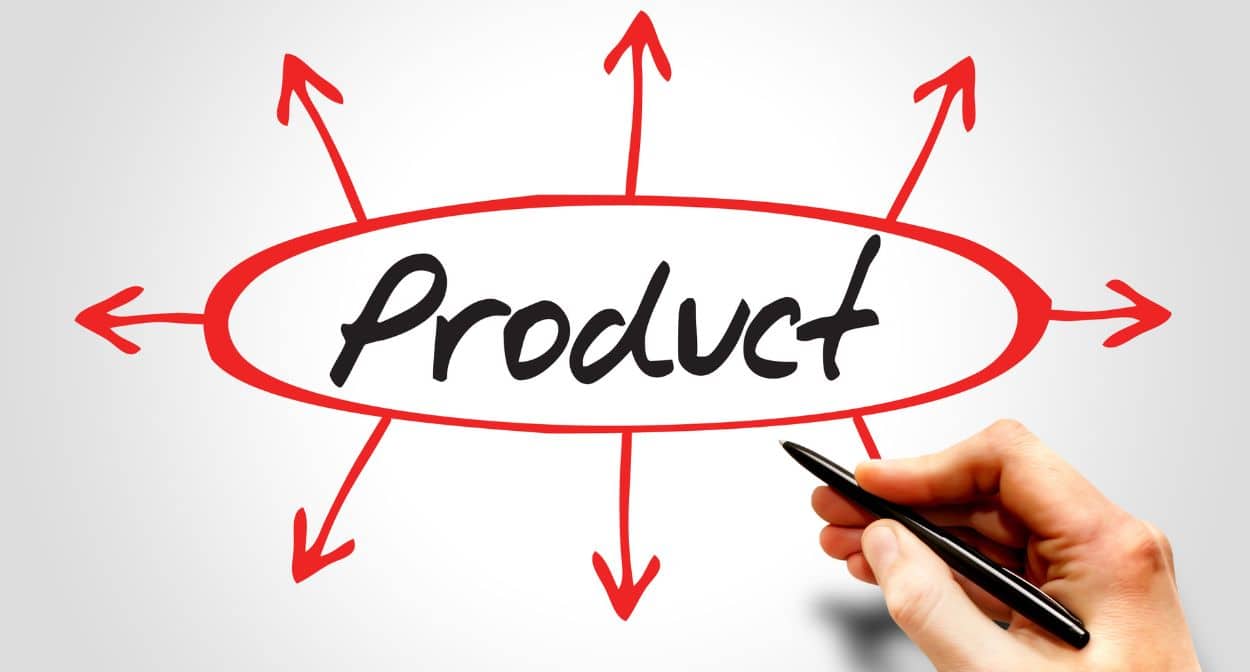In the dynamic world of digital marketing, understanding your customer is the key to success. It’s not enough to know who they are—you need to understand where they are in their buying journey. This is where the concept of customer awareness comes into play.
Customer awareness refers to understanding where your potential customers are in their journey toward making a purchase. It’s about recognizing the stage they’re at, from being utterly oblivious to their problem to being ready to make a purchase. This understanding is crucial because it allows you to tailor your marketing strategies to meet your customers exactly where they are, providing them with the information and motivation they need to move forward in their journey.
There are five levels of customer awareness—Unaware, Problem-Aware, Solution-Aware, Product-Aware, and Most-Aware. Each level represents a different stage in the customer’s journey and requires a different marketing approach. By understanding these levels, you can create targeted marketing strategies that resonate with your customers, build relationships, and guide them toward purchasing.
In this article, we’ll delve into each level in detail, exploring what characterizes customers at each stage, how to tailor your marketing approach to each level, and the potential challenges and pitfalls to avoid. So, let’s embark on this journey of understanding our customers better and creating more effective marketing strategies.
The Five Levels of Customer Awareness

Unaware Level of Customer Awareness
At the Unaware level, customers are oblivious to the problem they’re experiencing. They’re not conscious of any pain points or issues that need addressing; and are certainly not looking for solutions.
This level of awareness is characterized by a lack of knowledge about a problem’s existence. Customers at this stage are content with their current situation because they’re not aware that there could be a better way.
Marketing Approach to Unaware Prospects
The marketing approach for Unaware customers should be focused on education and awareness.
The goal is to make these customers realize they have a problem that needs solving. This can be achieved through informational content that subtly introduces the problem and its implications.
For instance, if you’re marketing a meal planning app, you might create content about food waste’s financial and environmental cost, a problem that your app can help solve.
Example of Content for Unaware Prospects
Let’s take the example of a company that offers time management software. The Unaware customers might be constantly overwhelmed with their tasks but consider it a regular part of their work life.
They might not realize that their stress and long work hours stem from poor time management. A blog post titled “The Hidden Costs of Multitasking at Work” could make them aware of the problem and its impact on their productivity and work-life balance.
Challenges and Pitfalls of Marketing to Unaware Prospects
When dealing with Unaware customers, the main challenge is getting their attention and making them realize they have a problem.
Since they’re not actively looking for solutions, they might not be receptive to direct marketing messages about your product or service.
Mismatching Media/Content Pitfall
For instance, if you’re using highly technical content to explain the problem to a lay audience, it might go over their heads, causing them to lose interest. Similarly, suppose you’re using a medium your target audience doesn’t typically engage with. In that case, your message might not reach them at all.
Moreover, trying to sell your product or service to Unaware customers can be counterproductive. Since they don’t recognize they have a problem, they won’t see the value in your solution. This can lead to wasted marketing efforts and even turn potential customers off if they feel they’re being sold too prematurely.
Therefore, it’s crucial to match your content and delivery method to the customer’s level of awareness. For Unaware customers, the focus should be on education and attention, using clear, accessible language and mediums your target audience engages with.

Problem-Aware Level of Customer Awareness
At the Problem-Aware level, customers have recognized that they have a problem. Still, they may not fully understand it or know the available solutions. They’re aware of the pain points they’re experiencing, but they’re unsure about how to address them.
This stage is characterized by frustration or dissatisfaction as customers grapple with a problem they don’t yet know how to solve.
Marketing Approach to Unaware Prospects
The marketing approach for Problem-Aware customers should focus on empathizing with their problems and introducing potential solutions.
This can be achieved through content that acknowledges their pain points and assures them that solutions exist. The goal is to move them from feeling frustrated and stuck to feeling hopeful and motivated to find a solution.
Example of Content for Unaware Prospects
Let’s continue with the example of a company that offers time management software. The Problem-Aware customers might be those who have recognized that their stress and long work hours are due to poor time management, but they don’t know how to improve their time management skills.
A blog post titled “Top 5 Challenges of Time Management and How to Overcome Them” could resonate with these customers, as it acknowledges their problems and introduces the idea that solutions exist.
Challenges and Pitfalls of Marketing to Unaware Prospects
One of the main challenges when dealing with Problem-Aware customers is ensuring that your content resonates with their current state of mind.
Suppose your content is too focused on your product or service. In that case, it might come across as sales and turn off customers who are not ready to consider specific solutions.
Mismatching Media/Content Pitfall
For instance, if you’re using overly promotional content to introduce potential solutions, it might be off-putting to customers who are still trying to understand their problems.
Similarly, if you’re using a medium your target audience doesn’t typically engage with, your message might not reach them.
Moreover, it’s crucial to balance empathizing with the customer’s problem and introducing potential solutions. If you focus too much on the issue, it could reinforce the customer’s feelings of frustration and make them feel stuck.
On the other hand, if you rush into presenting solutions, it could overwhelm the customer and make them feel pressured to make a decision.
Therefore, the key to marketing to Problem-Aware customers is to empathize with their problem, assure them that solutions exist, and guide them gently towards considering potential solutions, using content and mediums that resonate with them.

Solution-Aware Level of Customer Awareness
At the Solution-Aware level, customers are aware of their problem and know potential solutions exist. They understand what results they want to achieve but may not be aware of your specific product or service.
A sense of curiosity and exploration characterizes this stage as customers start researching different solutions to their problems.
Marketing Approach to Unaware Prospects
The marketing approach for Solution-Aware customers should focus on presenting your product or service as a potential solution to their problem.
This can be achieved through content that explains how your product or service works and how it can help them achieve the results they’re looking for. The goal is to move them from being curious about potential solutions to being interested in your specific solution.
Example of Content for Unaware Prospects
Continuing with the time management software example, Solution-Aware customers might be those who have started researching different ways to improve their time management skills.
They might be reading blog posts about different time management techniques, trying other productivity apps, or considering enrolling in a time management course.
A blog post titled “How Our Time Management Software Can Help You Reclaim Your Workday” could capture their interest by presenting your software as a potential solution to their problem.
Challenges and Pitfalls of Marketing to Unaware Prospects
One of the main challenges when dealing with Solution-Aware customers is standing out from the competition. Since these customers are actively researching different solutions, they will likely come across various options, including your competitors.
Therefore, your content must clearly communicate what sets your product or service apart and why it’s the best solution to their problem.
Mismatching Media/Content Pitfall
For instance, if your content is too basic and doesn’t provide enough information about your product or service, it might not satisfy the customer’s desire to learn more about potential solutions. Similarly, if your content is too technical and difficult to understand, it might overwhelm the customer and turn them off.
Moreover, it’s crucial to avoid becoming too salesy at this stage. While Solution-Aware customers are interested in learning about potential solutions, they’re not yet ready to make a purchase. Therefore, your content should educate the customer about your product or service rather than push them to buy.
Therefore, the key to marketing to Solution-Aware customers is to present your product or service as a potential solution to their problem, using clear, informative, and engaging content that sets you apart from the competition.

Product-Aware Level of Customer Awareness
At the Product-Aware level, customers are aware of your product or service and are considering it among other options. They understand the problem they face, know solutions exist, and know that your business offers a solution.
This stage is often called the “researcher” phase, where potential customers actively look for solutions and weigh each option’s pros and cons.
Marketing Approach to Unaware Prospects
The marketing approach for Product-Aware customers should focus on showcasing your product or service’s unique features and benefits.
This can be achieved through content that dives deeper into how your product or service works, how it compares to other options, and why it’s the best choice for the customer. The goal is to move them from considering various options to preferring your solution.
Example of Content for Unaware Prospects
Continuing with the time management software example, Product-Aware customers might have narrowed their options to a few different time management tools, including your software.
They might be comparing each option’s features, pricing, and reviews to determine which is the best fit for their needs.
A blog post titled “Why Our Time Management Software Outperforms the Competition” could sway their decision in your favor by highlighting the unique features and benefits of your software.
Challenges and Pitfalls of Marketing to Unaware Prospects
One of the main challenges when dealing with Product-Aware customers is differentiating your product or service from the competition.
Since these customers are comparing different options, your content must clearly communicate why your product or service is the best choice. This requires a deep understanding of your product or service, your competition, and your customer’s needs and preferences.
Mismatching Media/Content Pitfall
For instance, if your content is too generic and doesn’t provide specific information about your product or service, it might not give the customer the information they need to decide. On the other hand, if your content is too promotional and lacks objective data, it might make the customer skeptical about the authenticity of your claims.
Moreover, it’s crucial to avoid being overly aggressive at this stage. While Product-Aware customers are close to purchasing, they’re still evaluating their options. Therefore, your content should focus on providing the information they need to make an informed decision rather than pushing them to buy.
Therefore, the key to marketing to Product-Aware customers is to showcase your product or service’s unique features and benefits, using clear, detailed, and objective content that helps them make an informed decision.

Most-Aware Level of Customer Awareness
At the Most-Aware level, customers are ready to make a purchase. They are fully aware of their problem, the solution they need, and your specific product or service that provides this solution.
This stage is characterized by a readiness to act, as customers have all the information they need and are poised to decide.
Marketing Approach to Unaware Prospects
The marketing approach for Most-Aware customers should focus on facilitating the purchase process and providing a final push toward conversion.
This can be achieved through content that offers incentives, discounts, or special deals, as well as content that reassures the customer about their decision, such as testimonials or case studies.
The goal is to move them from being ready to purchase to actually completing the purchase.
Example of Content for Unaware Prospects
Continuing with the time management software example, Most-Aware customers might have decided that your software is the best solution for their needs and are just about to purchase.
An email campaign offering a limited-time discount on your software could provide the final push they need to convert.
Similarly, a case study showcasing how another customer significantly improved their productivity using your software could reassure them about the effectiveness of your solution.
Challenges and Pitfalls of Marketing to Unaware Prospects
One of the main challenges when dealing with Most-Aware customers is ensuring a smooth and easy purchase process. Any friction or complications at this stage could deter the customer and result in a lost sale. Therefore, making the purchase process as straightforward and seamless as possible is crucial.
Mismatching Media/Content Pitfall
For instance, if your content is too informational and doesn’t provide a clear call to action, it might not guide the customer toward purchasing. On the other hand, if your content is too pushy and doesn’t provide any reassurance or incentives, it might make the customer second-guess their decision.
Moreover, it’s crucial to balance encouraging customers to purchase and respecting their autonomy. While Most-Aware customers are ready to buy, they don’t want to feel pressured or rushed into making a decision.
Therefore, your content should provide a gentle push toward conversion while also reassuring the customer that they’re making the right decision.
Therefore, the key to marketing to Most-Aware customers is facilitating the purchase process, providing reassurance and incentives, and guiding the customer towards conversion, using clear, persuasive, and supportive content.
The Importance of Targeting the Right Level of Awareness

Avoiding Misdirected Marketing Efforts
The first crucial point to understand is that marketing efforts can easily be misdirected if you’re not aware of your customer’s level of awareness.
For instance, if you’re marketing a solution to someone who doesn’t even realize they have a problem, your message will likely be ignored. They won’t see the value in your product or service because they don’t see the need for it.
This is why it’s essential to tailor your marketing efforts to match the customer’s current level of awareness. Doing so ensures that your message resonates with them and moves them further along their buying journey.

Maximizing Marketing ROI
Secondly, understanding the levels of customer awareness is critical to maximizing your return on investment (ROI) in marketing.
When you target the right level of awareness, your marketing efforts are more likely to result in conversions because they’re tailored to where the customer is in their buying journey.
For example, offering a discount to a customer at the ‘Most-Aware’ stage and ready to make a purchase can be the final push they need to convert. On the other hand, the same discount might not be as effective for a customer at the ‘Unaware’ stage who doesn’t yet see the value in your product or service.

Building Stronger Customer Relationships
Lastly, you can build stronger relationships with your customers by targeting the right level of awareness.
You position your business as a helpful and trustworthy resource when you meet customers where they are and provide them with the information and solutions they need at each stage of their journey.
This helps move customers along their buying journey, fosters loyalty, and encourages repeat business.
For example, providing educational content to a ‘Problem-Aware’ customer can help them understand their problem better and see your business as an expert.
This builds trust and positions your business favorably when the customer moves to the ‘Solution-Aware’ and ‘Product-Aware’ stages and starts considering different solutions.
Recap
In the ever-evolving digital marketing landscape, understanding customer awareness levels is not just beneficial—it’s essential. Each stage, from Unaware to Most-Aware, represents a unique mindset of your potential customers. By recognizing these stages, you can tailor your marketing strategies to meet your customers exactly where they are, providing them with the information, reassurance, and motivation they need to move forward in their buying journey.
Remember, your customers are not just faceless entities in the crowd. They are individuals, each with their own unique needs, preferences, and levels of awareness. By understanding these levels, you can speak directly to their concerns, answer their questions, and guide them toward the realization that your product or service is the solution they’ve been looking for.
So, let’s take this knowledge and put it into action. Let’s create marketing strategies that resonate with our customers, meet them where they are, and guide them where they want to go. Let’s not just sell products or services—let’s provide solutions, build relationships, and create value.
Because at the end of the day, understanding the levels of customer awareness is about more than just improving our marketing strategies—it’s about connecting with our customers on a deeper level, understanding their journey, and becoming a trusted partner in their success. So, let’s embrace this understanding, apply it in our marketing efforts, and see the remarkable impact it can have on our businesses and customers.
Customer Awareness FAQs
How can I determine my customers' level of awareness?
Determining your customers’ level of awareness involves understanding their needs, preferences, and behaviors. This can be achieved through market research, customer surveys, and customer data analysis. By understanding your customers’ pain points, what solutions they’re looking for, and how they interact with your brand, you can get a sense of where they are in their buying journey.
How should I tailor my marketing approach to each level of awareness?
Your marketing approach should be tailored to meet your customers where they are in their buying journey. For Unaware customers, focus on educating them about the problem they have. For Problem-Aware customers, empathize with their pain and introduce potential solutions. Present your product or service as a possible solution for Solution-Aware customers. For Product-Aware customers, showcase your product or service’s unique features and benefits. And for Most-Aware customers, facilitate the purchase process, and provide a final push towards conversion.
What are the potential challenges and pitfalls in marketing to different levels of awareness?
The main challenge in marketing to different levels of awareness is ensuring that your marketing strategies resonate with your customers. If your strategies don’t match your customers’ level of awareness, they might not be effective. For instance, trying to sell your product to Unaware customers who don’t realize they have a problem can be counterproductive. Similarly, overwhelming Solution-Aware customers with too much information about your product can turn them off. Therefore, it’s crucial to understand your customers’ level of awareness and tailor your marketing strategies accordingly.
How do keywords help target different levels of customer awareness?
Keywords play a crucial role in targeting different levels of customer awareness. By understanding and using the search terms your customers use at various stages of their buying journey, you can create content that meets them where they are. For instance, Unaware customers might use general search terms related to their interests or pain points. In contrast, Most-Aware customers might use specific search terms for your product or service. Incorporating these keywords into your content ensures it reaches the right customers at the right stage of their journey.
What level of awareness should prospects receive testimonials, case studies, and reviews?
Testimonials, case studies, and reviews are most effective when targeting Product-Aware and Most-Aware customers. These customers are already considering your product or service and are looking for reassurance about their decision. Testimonials, case studies, and reviews can provide this reassurance by showcasing other customers’ experiences and demonstrating the effectiveness of your product or service. However, it’s important to note that while these types of content are most effective at the later stages of the buying journey, they can also be helpful at earlier stages to build trust and credibility.


